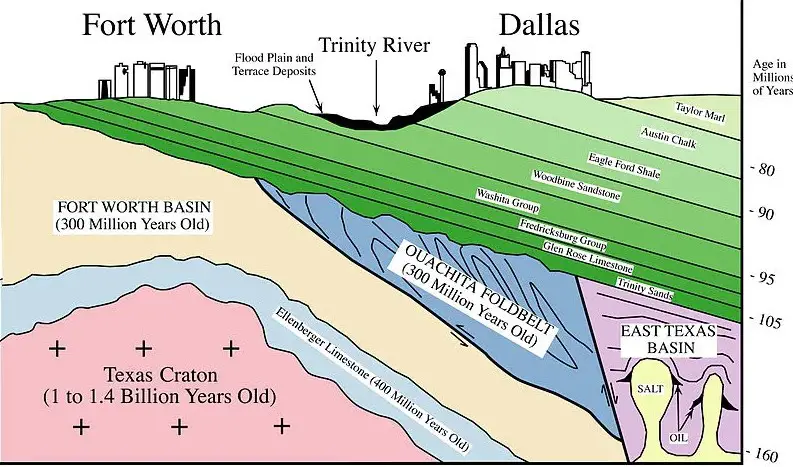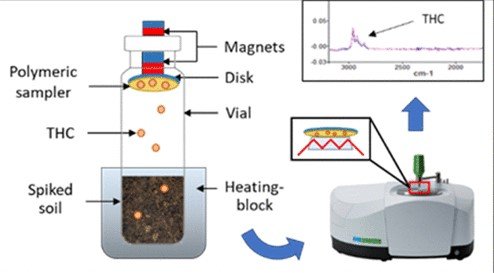In the realm of environmental science, the distinction between Total Petroleum Hydrocarbons (TPH) and Total Recoverable Hydrocarbons (TRH) plays a pivotal role in the assessment and management of hydrocarbon pollution. These terms, often encountered in studies related to soil, water, and air quality, provide a framework for measuring the concentration and impact of hydrocarbon contaminants in the environment.
TPH and TRH represent different scopes of hydrocarbon measurement, each with its specific range of compounds it encompasses. TPH refers to the full spectrum of hydrocarbons present in petroleum products that can be extracted from a sample, while TRH focuses on the fraction of hydrocarbons that can be recovered and measured using specific extraction techniques. This distinction is crucial for environmental scientists and engineers who work on pollution assessment and remediation projects.
The accurate measurement and understanding of TPH and TRH are essential for evaluating the environmental impact of hydrocarbon pollution, guiding remediation efforts, and ensuring compliance with regulatory standards. Their analysis helps in identifying pollution sources, assessing potential risks to human health and the environment, and determining the effectiveness of pollution control and remediation strategies.

TPH Overview
Definition and Components
Total Petroleum Hydrocarbons (TPH) are a large family of several hundred chemical compounds that come from crude oil. TPH is a term used to describe a broad range of hydrocarbon compounds found in the environment. These compounds are categorized into two main groups:
- Aliphatic hydrocarbons: This includes alkanes and cycloalkanes, which are saturated hydrocarbons. They are known for their straight or branched chain structures.
- Aromatic hydrocarbons: This group includes compounds with one or more aromatic rings, such as benzene, toluene, ethylbenzene, and xylenes (BTEX), known for their use in industrial applications and presence in petroleum products.
These components are significant because they represent the vast majority of organic pollutants found in environments contaminated by petroleum and its derivatives.
Measurement Techniques
Measuring TPH in environmental samples is critical for assessing pollution levels and guiding remediation efforts. The measurement process typically involves two main steps:
- Sample Collection: Samples are collected from contaminated soil, water, or air using standardized protocols to ensure accuracy and consistency.
- Laboratory Analysis:
- Extraction: Hydrocarbons are extracted from the samples using solvents.
- Analysis: Gas chromatography (GC) or gas chromatography-mass spectrometry (GC-MS) are the most common methods for analyzing TPH content. These techniques separate, identify, and quantify the hydrocarbons present in the sample.
Field testing kits and portable GC instruments also allow for on-site measurement, providing immediate results that are essential for rapid assessment and decision-making.
Environmental Impact
TPH compounds can have a significant impact on soil, water, and air quality, affecting ecosystems and human health. Their effects vary depending on the types of hydrocarbons present and their concentration levels:
- Soil: TPH contamination can hinder soil fertility, affecting plant growth and microbial activity.
- Water: Hydrocarbons can pollute groundwater and surface water, posing risks to aquatic life and drinking water sources.
- Air: Volatile hydrocarbons can evaporate into the air, contributing to air pollution and health issues such as respiratory problems.
Monitoring and managing TPH levels in the environment are crucial for preventing pollution and protecting public health.
TRH Overview
Definition and Scope
Total Recoverable Hydrocarbons (TRH) refer to the subset of hydrocarbons in a sample that can be extracted and measured. Unlike TPH, which considers all hydrocarbons present, TRH focuses on those that are recoverable using specific analytical methods. TRH measurements typically target hydrocarbons that are more relevant to environmental health risks, including both aliphatic and aromatic compounds.
The key difference between TPH and TRH lies in their scope and measurement approach. TRH provides a more targeted analysis of hydrocarbons that are considered environmental priorities.
Measurement Methods
Quantifying TRH involves distinct steps tailored to recover and measure hydrocarbons effectively:
- Extraction: Hydrocarbons are extracted from environmental samples using solvents or other techniques designed to recover a specific range of compounds.
- Analysis:
- Solvent Extraction and Purification: The extracted hydrocarbons are purified to remove any substances that might interfere with the analysis.
- Quantification: Techniques such as gas chromatography (GC) are used to quantify the TRH content. The focus is on extracting and measuring hydrocarbons that pose significant environmental or health risks.
This approach ensures that the assessment of contaminated sites is focused on hydrocarbons that are most likely to impact environmental and human health.
Significance in Environmental Studies
TRH measurements play a crucial role in environmental pollution assessments and remediation effectiveness. Understanding the concentration and distribution of recoverable hydrocarbons helps in:
- Identifying pollution sources: TRH data can pinpoint the specific types of hydrocarbon pollution, aiding in source identification.
- Risk assessment: By focusing on recoverable hydrocarbons, TRH measurements provide critical information for evaluating risks to human health and the environment.
- Guiding remediation: Knowing the types and concentrations of TRH can inform the selection of appropriate remediation techniques and strategies.

Key Differences
Hydrocarbon Range
The range of hydrocarbons that TPH and TRH measure provides a fundamental distinction between these two metrics. TPH encompasses a wider array of hydrocarbons, including both saturated (aliphatics) and unsaturated (aromatics) compounds. This broad spectrum includes everything from light hydrocarbons, like methane, to heavier compounds found in crude oil and its derivatives.
In contrast, TRH focuses on a narrower set of hydrocarbons that can be recovered and measured from environmental samples using specific extraction methods. This typically includes hydrocarbons that are more relevant to environmental and health risk assessments, such as those that persist in the environment and have known toxicological profiles.
- TPH measures a broad spectrum of hydrocarbons, offering a comprehensive view of petroleum-based pollution.
- TRH zeroes in on recoverable hydrocarbons, providing targeted data on compounds of concern.
Measurement Approaches
The measurement methodologies for TPH and TRH highlight another key difference.
For TPH:
- Sample Preparation: Involves collecting samples from contaminated sites and preparing them for analysis, which may include homogenization and dilution.
- Analytical Methods: Gas chromatography (GC) and gas chromatography-mass spectrometry (GC-MS) are commonly used to separate, identify, and quantify the wide range of hydrocarbons present.
For TRH:
- Sample Preparation: Similar to TPH, but may involve additional steps to focus on recoverable hydrocarbons, such as selective solvent extraction.
- Analytical Methods: Also employs GC and GC-MS, but the focus is on quantifying a subset of hydrocarbons. This might involve using specific columns or detection settings that are optimized for the targeted hydrocarbons.
These differences in approach reflect the distinct objectives of TPH and TRH measurements, with TPH providing a broad assessment and TRH offering focused insights.
Regulatory Perspectives
Regulatory treatment of TPH and TRH varies significantly across different jurisdictions. This variation reflects the differing objectives of environmental regulation and the specific concerns of local ecosystems and human health risks.
- TPH: Often subject to broader regulatory limits due to its comprehensive nature. Regulations may set maximum allowable concentrations in soil, water, and air, aiming to protect against a wide range of potential impacts.
- TRH: Regulations may be more specific, focusing on particular hydrocarbons or groups of hydrocarbons known to pose significant risks. This can lead to more targeted regulatory approaches and cleanup criteria.
Examples of regulatory differences can be seen in the United States, where both federal and state-level regulations apply, and in the European Union, which has its own set of standards. Each jurisdiction has developed its guidelines based on local environmental and public health priorities.
Environmental and Health Implications
The differences between TPH and TRH have significant implications for environmental risk assessments and public health considerations.
- TPH provides a broad overview of petroleum hydrocarbon presence, useful for initial assessments of contamination. However, it may not always offer clear insights into specific health risks.
- TRH, by focusing on recoverable hydrocarbons, can provide more detailed information on compounds that are directly relevant to human health and environmental safety.
Understanding these distinctions helps in crafting more accurate and effective risk assessments, prioritizing areas for intervention, and communicating risks to the public.
Practical Applications
Site Assessment
Both TPH and TRH measurements are integral to environmental site assessments, particularly in the investigation of soil and groundwater contamination.
- TPH measurements are typically used in the initial stages of site assessment to get an overall sense of the petroleum hydrocarbon pollution.
- TRH data, on the other hand, is crucial for detailed investigations, helping to identify specific hydrocarbons of concern and guiding remediation planning.
This dual approach ensures comprehensive site evaluation, from preliminary screening to in-depth analysis.
Remediation Strategies
The data on TPH and TRH are instrumental in designing and evaluating remediation strategies for contaminated sites.
- TPH data can indicate the extent of contamination, helping in the selection of appropriate remediation technologies (e.g., bioremediation, soil washing).
- TRH measurements can fine-tune remediation efforts, focusing on removing hydrocarbons that pose the highest risks to the environment and human health.
This tailored approach enhances the effectiveness and efficiency of cleanup operations, ensuring that remediation efforts are both comprehensive and cost-effective.
Policy and Regulation
Understanding the differences between TPH and TRH is critical for developing environmental policy, regulation, and compliance standards.
- Policymakers rely on TPH and TRH data to set safety thresholds and cleanup criteria, ensuring that regulations are both protective and practical.
- Regulatory bodies use these measurements to assess compliance, monitor pollution levels, and enforce environmental laws.
FAQs
What are Total Petroleum Hydrocarbons (TPH)?
Total Petroleum Hydrocarbons (TPH) encompass a broad group of chemical compounds derived from crude oil, including various types of hydrocarbons such as aliphatics and aromatics. TPH measurement is a key indicator of petroleum-based pollution in the environment, used to evaluate the extent of contamination in soil, water, and air.
How are TPH and TRH measured?
TPH and TRH measurements involve collecting samples from the contaminated site and analyzing them through laboratory methods such as gas chromatography. While TPH analysis aims to quantify all types of hydrocarbons present, TRH measurement focuses on the hydrocarbons that can be recovered and measured following specific extraction procedures.
Why is distinguishing between TPH and TRH important?
Distinguishing between TPH and TRH is important for accurate environmental assessment and remediation. This differentiation allows for a more precise understanding of the nature and extent of hydrocarbon pollution, guiding targeted remediation strategies and ensuring that environmental cleanup efforts are effective and compliant with regulatory requirements.
How do TPH and TRH impact environmental health?
TPH and TRH can have significant impacts on environmental health, affecting soil quality, groundwater resources, and air purity. High levels of these hydrocarbons can pose risks to wildlife and human health, making it crucial to monitor and manage their presence in the environment to prevent and mitigate pollution.
Conclusion
The differentiation between Total Petroleum Hydrocarbons (TPH) and Total Recoverable Hydrocarbons (TRH) is more than a technical distinction; it’s a fundamental aspect of environmental science that influences how we assess, manage, and remediate hydrocarbon pollution. Understanding these terms enables a nuanced approach to addressing environmental challenges, ensuring that efforts to combat pollution are informed, precise, and effective.
As we continue to navigate the complexities of environmental pollution, the role of accurate TPH and TRH measurement cannot be overstated. It serves as the basis for developing strategies that protect our natural resources and public health, highlighting the ongoing need for rigorous environmental science and responsible management of hydrocarbon contaminants. This awareness and commitment to environmental stewardship will be crucial in our endeavors to create a sustainable and healthy planet for future generations.

